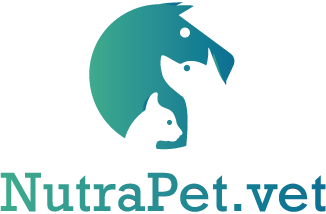Published in the journal Frontiers in Veterinary Science a U.S. study prospective cohort study, which is the first work to quantify the index of dysbiosis in these cases.
In the dog, the most common cause of hepatic encephalopathy can be traced to the presence of a congenital porto-systemic shunt, that is, anabnormality present from birth in which one or more vessels convey blood flow from the intestine directly into the systemic circulation without passing through the filter represented by the liver parenchyma. Whenever possible, with the intent to promote portal blood flow and improve liver function, surgery is the treatment of choice. In terms of medical therapy, the approach aims to reduce enteric toxin production and absorption and involves the use of a low-protein diet and the administration of lactulose, antibiotics, anticonvulsants, and probiotics.
It should be pointed out that, in humans, the link between the gut microbiota, chronic hepatopathy, and hepatic encephalopathy has been the focus of numerous studies that have pointed to theprimary role played by ammonia produced by amino acid degradation and revealed significant differences in the composition of the gut microflora that could fuel symptoms, for example, by altering barrier function or through an increase in urease-producing bacteria. So much so that we speculate that manipulation of the gut microbiota may improve the management of these patients.
For the dog, the data are still to be considered “in progress,” but all indications are that medical treatment of porto-systemic shunts-usually long-term-may interfere with the composition of the microbiota, leading to protracted dysbiosis, with all that this implies on the animal’s condition. Testing this hypothesis was a U.S. prospective cohort study , published in the journalFrontiers in Veterinary Science.
Dysbiosis is as frequent as it is significant
The U.S. work involved 27 dogs (mean age 10 months, mean weight 4.9 kg): all were on hypoprotein diet and lactulose, 22 on antibiotics, 7 on acid-suppressants, 3 on anticonvulsants, 2 on probiotics; 22 had undergone surgical attenuation of porto-systemic shunts. Dysbiosis index and microbiota arrangement were assessed by real-time qPCR. The evaluation showed that 63 percent had a dysbiosis index > 2 – the cutoff for being able to talk about dysbiosis in dogs – with the overall mean being 3.02 (range 4.23-8.42), but in the antibiotic-treated animals it was 4.3 (range -4.23-8.42) versus a mean of 1.52 (range -1.62-5.43) in those without antibiotics(p = 0.58).
The future goal is to optimize the approach
The U.S. one is the first study to quantify the index of dysbiosis in a cohort of dogs diagnosed with congenital porto-systemic shunt and attests that dysbiosis appears definitely frequent and significant, despite not appearing to influence clinical symptomatology. As the authors point out, however, this is a pilot study that should open up for further investigation that can more thoroughly characterize the microbiota of these animals and identify in detail the role of various treatments, including surgery, on microflora alterations. Indeed, the results of futuristic prospective, controlled studies could provide valuable insights into optimizing the approach to the problem.
Reference
Squire N, Lux C, Tolbert K, Lidbury J, Sun X, Suchodolski JS. Characterization of the Fecal Microbiome in Dogs Receiving Medical Management for Congenital Portosystemic Shunts. Front Vet Sci. 2022;9:897760. Published 2022 Jul 28. doi:10.3389/fvets.2022.897760











